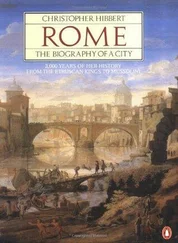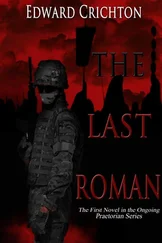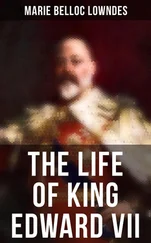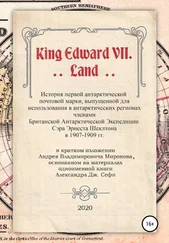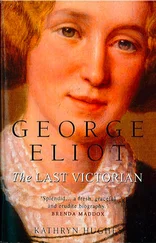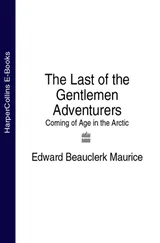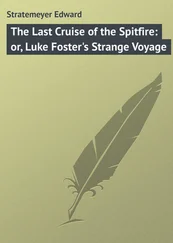Almost everywhere he went the Prince was greeted with the most enthusiastic welcome from enormous crowds. He received countless addresses, inspected parade after parade of volunteers, made numerous speeches written out for him by the Duke of Newcastle, held levee after levee, shook countless people by the hand, went from one public engagement to another, waved to a cheering crowd of 50,000 people at Toronto, acknowledged the acclamations of another vast crowd at Montreal, attended lengthy banquets and nightlong balls, dancing tirelessly, cheerfully humming his favourite tunes; and at one particular ball, held in a specially constructed ballroom at the foot of Mont Royal, where champagne as well as claret gushed from the fountains and newly transplanted trees surrounded an artificial lake, he never sat out once until five o’clock in the morning. The newspapers were full of talk about him; his features appeared in advertisements for cider and tins of pork and beans; his name was used to sell all manner of goods from boots to umbrellas; the Prince of Wales’s feathers sprouted everywhere.
He behaved himself admirably. To be sure, at Montreal he blushed deeply and looked rather annoyed as his fellow guests crowded round him, staring. But afterwards, he ‘became all gaiety and animation,’ the New York Herald reported. He entered into the spirit of the occasion ‘with all the zest and lightheartedness of an ardent temperament, and with a spirit truly democratic’. So it was at Hamilton, where the Prince had never ‘seemed more manly or in better spirits. He talked away to his partner … He whispered soft nothings to the ladies as he passed them in the dance, directed them now to go right, and shook his finger at those who missed the figures … in short he was the life of the party.’
There was but one serious misfortune: in a speech delivered at the French University of Laval, the Prince gave offence to the Roman Catholic members of his audience by addressing their bishops as ‘Gentlemen’ instead of ‘My Lords’, while the Duke of Newcastle offended the violently antipapist Protestant Orangemen by the placatory tone of his published explanation. This explanation led to unpleasant demonstrations by Orangemen shouting slogans and waving placards on the quay at Kingston. The Duke of Newcastle having insisted that the Prince should not go ashore, their steamer departed to hisses and shouts of derision and to the sound of the Orangemen’s bands playing their provocative tunes. In Toronto arches bearing Protestant slogans and colours and portraits of King William III were erected across the route which the Prince was to take to Government House. The Duke of Newcastle obtained an undertaking from the Mayor that all these arches would be removed; but, finding that one of them had been left standing, he sent for the Mayor to come to him at Government House, upbraided him in the strongest terms and told him that his invitation to the Prince’s levee would be cancelled. The Mayor, thoroughly disgruntled by this treatment and protesting that he had done all he could to get the offending arch taken down, at first refused to apologize, but later relented and was invited to attend a subsequent levee with his Corporation. At this levee he declined to shake hands with the Duke of Newcastle; but when the Prince told him that all was forgiven and that the Queen would be assured of his loyalty and sincerity, the Mayor broke down and could scarcely get through his reply.
On 20 September, on the understanding that he was to stay in hotels rather than in houses and to travel in the character of a private student intent upon the private observation of American life, the Prince was permitted to enter the United States. Not being a party to his parents’ conditions, the Americans could hardly be expected to treat him as a private person. Special trains were placed at his disposal, and crowds gathered wherever he stopped on his way across the country — at Detroit and Chicago, at Cincinnati, Pittsburgh, Harrisburg and Baltimore. He was required to shake hundreds of hands and to smile at thousands of people.
There were a few insulting remarks from Americans of Irish descent; there were one or two newspaper editorials which advised their readers not to behave like flunkeys in welcoming royalty; there were occasional disparaging remarks about his diminutive size: one writer in the New York Daily Tribune rudely comparing him to ‘a dwarf at a country fair’, another writing of his having shaken ‘some of the gigantic hand’ of Chicago’s Mayor ‘Long John’ Wentworth and of his having addressed a few complimentary remarks to the Mayor’s ‘lower waistcoat button’. There was a nasty episode at Richmond, Virginia, which was included in the itinerary when Newcastle gave way to demands that the Prince should visit at least one of the Southern states to see for himself how humanely Negro slaves were treated. During this visit he was jeered and jostled for his supposed preference for the ways of the Yankee North. But, in general — despite the bustle of an electoral campaign which was to result in the return of Abraham Lincoln as President — the ‘whole land’, as the actress Fanny Kemble said, ‘was alive with excitement and interest’ in the progress of the Prince. In Washington he was met by the Secretary of State, General Cass, and taken to the White House to see President James Buchanan, to whom he gave portraits of his parents painted by Winterhalter. The President accepted them enthusiastically, but his niece, Harriet Lane, who acted as his hostess, took the portraits to be their personal property and was most reluctant when later she had to hand them over to President Lincoln. The Prince was introduced to members of the Cabinet and was the guest of honour at a luncheon at the Capitol; he was taken up the Potomac to see George Washington’s house and grave at Mount Vernon, where he planted a chestnut sapling. At Philadelphia, which he thought the ‘prettiest town’ he had seen in America, he went to the opera — where the audience stood up to sing ‘God Save the Queen’ — and he visited the big, modern penitentiary, where he met a former judge, Vandersmith, who was serving a sentence for forgery. He asked him if he would like to talk. ‘Talk away, Prince,’ Vandersmith replied breezily. ‘There’s time enough. I’m here for twenty years!’ At St Louis, closely followed by a wagon advertising a local clothing store, he had visited the Great Fair, where he was given a meal in a wooden shed and, although he could not overcome his disgust at the sight of his hosts ejecting streams of tobacco-coloured saliva into repulsive-looking spittoons, he was apparently less shocked than the Duke of Newcastle by the table manners of the St Louis citizens who, like ‘ravenous animals’, set upon the sides of beef and buffalo tongue with pocket knives.
In New York, where he stayed in a suite at the Fifth Avenue Hotel — which, he said, was far more comfortable than any of his rooms at home — he was welcomed by a cheering, flag-waving crowd which, he was told, numbered 300,000. He also attended a ball in the old Academy of Music, where the floor gave way beneath the weight of 5,000 guests; and went to a breakfast given by the Mayor, who invited also the heads of twenty families, one of whom described his reception as ‘truly enthusiastic and genuine’. He was introduced to the Commander-in-Chief, General Winfield Scott, hero of the Mexican campaign of 1847, who took him to West Point to inspect a parade of cadets, and in Boston he met Longfellow, Emerson and Oliver Wendell Holmes. From Boston he went to Bunker Hill to survey the site of the first important engagement of the War of Independence; and to Harvard to see the university. Finally, the next week, on 20 October, he stepped once more aboard the Nero at Portland, Maine.
Читать дальше


